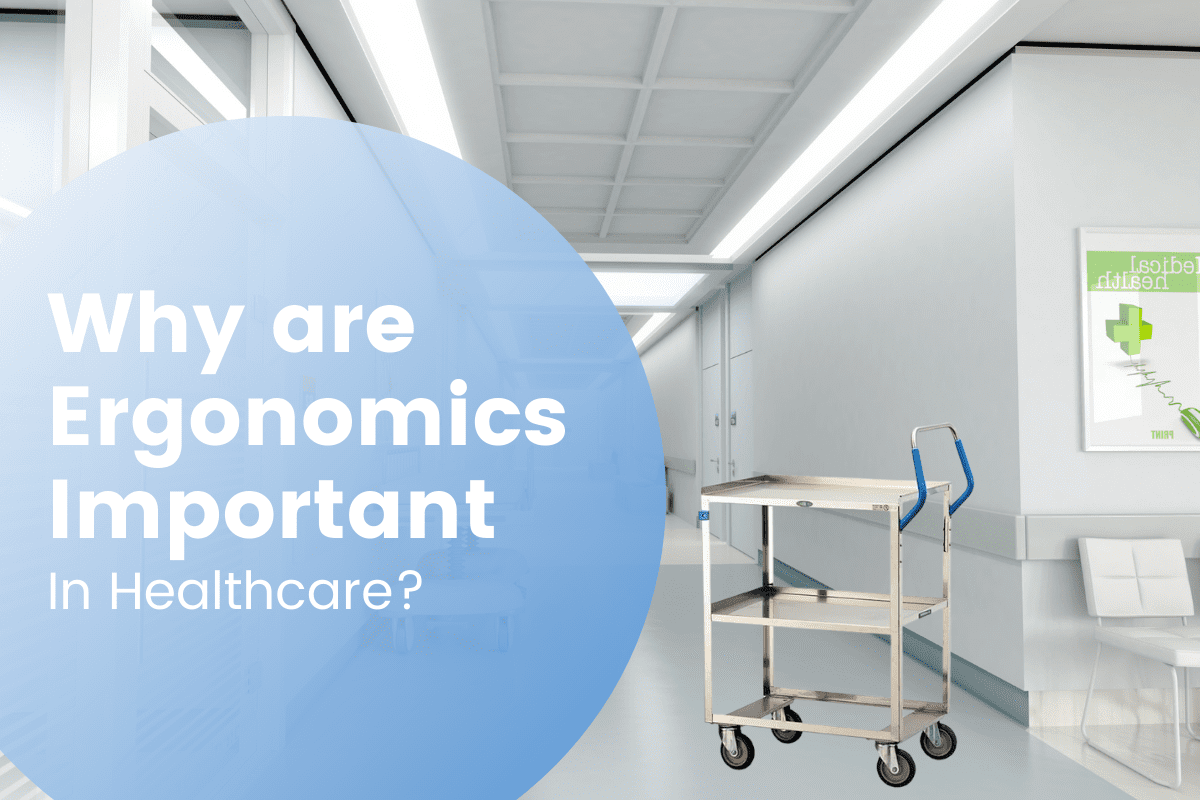
When you walk into a healthcare facility, you will be sure to see healthcare workers quickly moving from one task to the next. With the fast pace environment of healthcare facilities, often involving long shifts, it is crucial to understand the ergonomic stressors that staff may experience. Understanding these stressors will allow you to be proactive in preventing injuries, specifically Musculoskeletal disorders (MSDs), for staff members.
Healthcare workers are an essential component to providing for patients, but with this, they are exposed to different ergonomic stressors. Many of the daily tasks within healthcare create awkward postures and positions that can lead to injuries for staff. According to OSHA, “Work-related MSDs can be prevented. Ergonomics, fitting a job to a person, helps lessen muscle fatigue, increases productivity and reduces the number and severity of work-related MSDs.”
It is essential to provide equipment that helps eliminate some of the ergonomic stressors healthcare workers experience. What should you be looking for in your equipment to help reduce the ergonomic stressors placed on your staff? Here are some components that help reduce work related injuries for healthcare workers.
Easy Maneuvering with All-Swivel Casters:
Medical carts that are being used to push and pull loads need to be able to smoothly move and roll with ease. This factor is key to providing easy transportation of equipment and supplies and continuous hauling of both heavy and light loads. These casters also allow for easy maneuverability over uneven floors, creating ease for staff. All-swivel casters help reduce the level of effort needed to push a cart, which then puts less stress on the operator who now has less strain on their body. While it may seem like a small thing to use a little bit of extra effort to push a cart, over time, this repetitive action may lead to injuries.
Safe Zone Shelving for Repetitive Loading and Unloading:
Bending down and back up multiple times can be straining. Healthcare workers are often bending down to gather supplies, but having safe zone shelving can help reduce these risks. The level of these shelves are designed for staff who are continuously loading and unloading, keeping ergonomics in mind to limit the possibility for injury. Safe Zone shelf heights are designed to improve accessibility and decrease strain on the user. Lakeside’s Ergo-One series has a bottom shelf that is further from the ground which helps significantly in reducing the level of bending effort required by the user.
Ergonomic Handles:
Having an ergonomic handle for a natural grip is yet another important aspect in reducing work-related injuries. This handle helps the operator to keep control over the cart. This is very important as a uncontrollable cart that makes unpredictable turns poses many risks to the operator. Lakeside developed an angled handle that allows for a comfortable grip to reduce strain on the user.
Healthcare workers are exposed to a variety of ergonomic risks that can lead to injury from the equipment they use to the patients they are helping. Using equipment that is designed to help reduce ergonomic risks is one of the many ways healthcare facilities can provide their staff with less ergonomic strain, which overall provides a better work environment for their employees.
